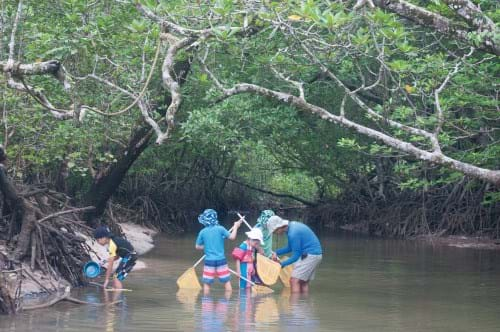Monsoon
 This time of the year, strong winds blow from the southwest, bringing the monsoon to Langkawi. The weather can change drastically very quickly. But do not let this ruin your holiday. Instead, enjoy the view of the storm heading towards and through the Datai bay from our Lobby Lounge while sipping a cup of hot coffee or tea. It can be quite an epic sight.
This time of the year, strong winds blow from the southwest, bringing the monsoon to Langkawi. The weather can change drastically very quickly. But do not let this ruin your holiday. Instead, enjoy the view of the storm heading towards and through the Datai bay from our Lobby Lounge while sipping a cup of hot coffee or tea. It can be quite an epic sight.
This is a time-lapse of the storm rolling into the bay taken in front of the Watersports pavilion. Unfortunately, the camera fell down as it started to pour.
The monsoon not only gives life to terrestrial organisms (the island turns green again), but also transports nutrients and minerals from the various substrates water has to travel through rivers before emptying into the ocean to be used by the marine microbes, the basis of the foodweb of the ocean, for growth and reproduction.
Ocean critters would usually find cover by diving deeper if they are out in deeper waters. Shallow inhabitants would hide from strong water movements caused by the winds in safe areas like crevices in rocks, in between mangrove roots, and inside coral reef structures.
However, prolonged river discharge can also spell trouble for marine organisms, especially the hard corals of the coral reef ecosystems. Excessive inputs of sediments via riverine discharge can smother corals and block out sunlight vitally needed for corals to survive.
Thankfully, the prop roots of mangroves also act as sediment traps, reducing the amount of sediments naturally transported into a watershed like the Datai bay. This is another amazing example of how very different habitats are connected to each other.

The prop roots of the mangroves are ideal places for young marine organisms to find cover from strong waves and currents, hence why mangrove forests are important nurseries. This also makes the perfect setting for our sustainable fishing activity for our younger guests. (When the storm subsides, of course.)